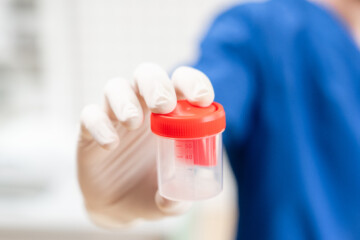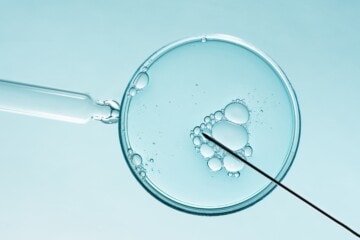There is a lack of awareness of the fertility problems which affect men– despite studies showing growing concern regarding sperm counts dropping significantly over the last 50 years. Male infertility is just as common as female infertility and it can be argued that it should be given more attention as a public health concern. We know that men can suffer from depression and anxiety when it comes to their fertility, but in general, men do not feel comfortable speaking about their concerns. We have explored this in detail in our latest guide on what you need to know about male infertility.
What is Azoospermia?
It is a condition where a man has no sperm present in his semen. Although it is a rare condition it is more common than you may think, with 1% of all men suffering from azoospermia [1]. This means the 500 men in every 50,000 men will have no sperm present in their semen. It can feel like a crushing blow to receive such definitive news when trying to conceive, but having azoospermia does not necessarily mean that you will never be able to father children. There are a number of different causes and treatments for azoospermia, especially with modern Assisted Reproductive Technologies (ART). Your fertility specialist will review your condition on an individual basis and make further recommendations.
What are the symptoms of azoospermia?
Most people don’t realise they have azoospermia until they begin trying to conceive. However, the underlying causes of azoospermia can sometimes lead to other symptoms such as:
- A low sex drive
- Erectile dysfunction
- Lumps, swelling, or discomfort around the testicles
- Decreased hair on the face or body
- Low ejaculate volume or “dry” orgasms
- Cloudy urine after sex
- Painful urination
- Pelvic pain
What are the types of azoospermia?
Pre-testicular azoospermia
What is it?
A type of non-obstructive azoospermia, a pre-testicular diagnosis usually means a lack of stimulation to otherwise healthy male genitalia. It is quite rare, believed to make up around 2% of all azoospermia cases. This is typically a result of very low or no presence of follicle-stimulating hormone (FSH), which is key to help producing sperm.
Pre-testicular azoospermia treatment
Depending on what is causing the condition a variety of treatments can be offered that will help to correct a deficiency of certain hormones in the body and hopefully result in the resumption of sperm production (spermatogenesis). Whilst not all treatments are successful, there is a good chance that treatment for pre-testicular azoospermia can solve the problem.
Testicular azoospermia
What is it?
Another type of non-obstructive azoospermia, this condition makes up for the majority of cases. This could be the result of a genetic condition, surgery, infection or potentially other causes.
Testicular azoospermia treatment
Getting help with testicular azoospermia is not straightforward and a successful diagnosis is usually dependent on a testicular biopsy (biopsy of the testis). Unfortunately, the prospects of success with treatments to help restart sperm production with this diagnosis are low. However, there is still hope, as testicular sperm extraction may give you a chance to conceive through IVF or ICSI (intra-cytoplasmic sperm injection).
Post-testicular azoospermia
What is it?
This is a type of obstructive azoospermia which is the second most common diagnosis behind testicular azoospermia. The main cause for this condition is down to a block or missing connection somewhere in the genital tract (for example, a vasectomy).
Post-testicular azoospermia treatment
It can be treated through surgery by reconnecting tubes in the genitals which are currently not allowing the sperm to travel. Whilst there are no guarantees, there is a chance of a very good outcome through this surgery.
How is azoospermia diagnosed?
Usually, azoospermia is diagnosed through semen analysis, where semen is tested and examined for living sperm. Your doctor will also conduct a physical examination and will ask you a series of questions about your medical history and lifestyle.
In some cases, you may need to undergo blood tests, ultrasounds, brain imaging or biopsies to aid with the diagnosis.
How can you prevent azoospermia?
Since azoospermia can sometimes be caused by infection or injury there are a few ways to lower your risk. These include:
- Being careful during rough contact sports
- Limiting your exposure to radiation
- Limiting your time spent in saunas or steam baths
Looking for more information?
At Fertility Family we are trying to change the perception around male infertility and provide more support to this community. We are aware Azoospermia is a particularly tough topic for men to hear about and doctors can sometimes overlook the impact it can have on mental health. If you are looking to learn more or need help, our partners at FNUK run support groups (currently through Zoom due to COVID-19 protocols) and have great information on all aspects of male infertility.
Sources
[1] hopkinsmedicine.org/health/conditions-and-diseases/azoospermia
https://www.sciencedirect.com/topics/medicine-and-dentistry/azoospermia








